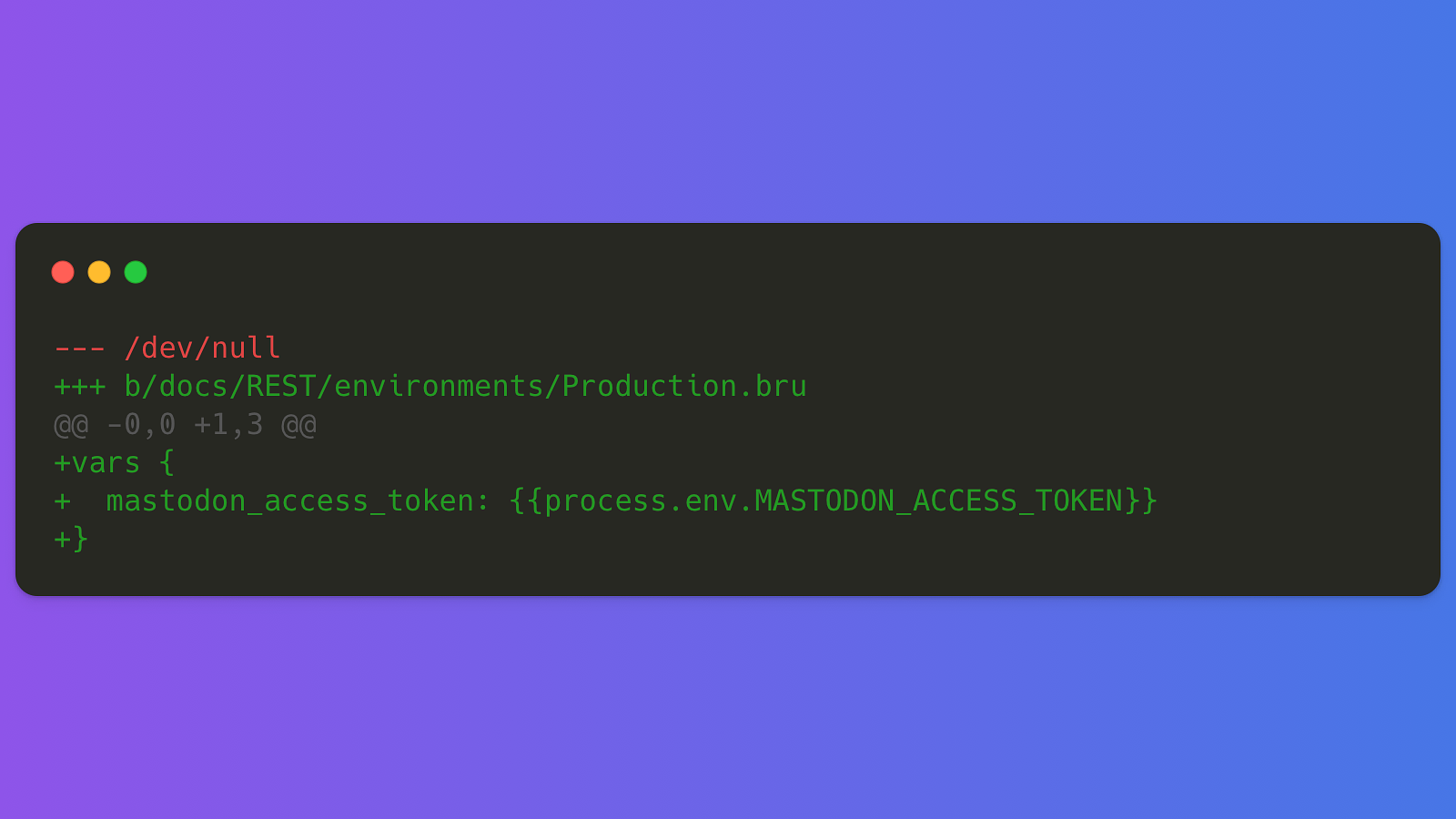Using Bruno - the API client
I started using Bruno this weekend, and I enjoyed it very much.
The biggest advantage for me is having all the collections stored in text files on my file system.

I store them in a Rails app's/docs/requests folder. Works very well!
Here is an example of what I defined in the project that I use to manage citations for Short Ruby Newsletter.
This is how I defined a collection. Bruno uses their own markup language called Bru, which is similar to JSON in some ways. For instance, it uses key-value pairs to store data, just like JSON.

I wanted the maston_access_token to be loaded from .env
variables. So I defined this for Bruno (yes the file extension if .bru
:) )

I created a new environment file at docs/REST/.env that I wanted to
not add to Git.
And because Git allows you to define .gitginore files in subfolders, I added a .gitignore file in ./docs to ignore the .env file.
I also added .env.sample to remind myself what do I need to define.

